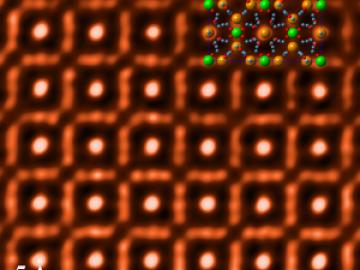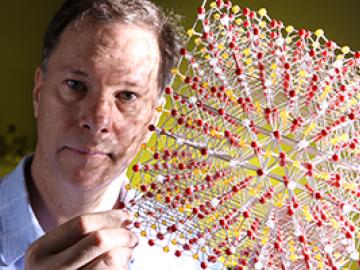Filter News
Area of Research
- (-) Materials (31)
- Advanced Manufacturing (3)
- Biological Systems (3)
- Biology and Soft Matter (3)
- Building Technologies (3)
- Chemical and Engineering Materials (2)
- Chemistry and Physics at Interfaces (5)
- Clean Energy (19)
- Climate and Environmental Systems (4)
- Computational Biology (1)
- Computational Chemistry (4)
- Computational Engineering (1)
- Computer Science (1)
- Earth Sciences (1)
- Energy Frontier Research Centers (6)
- Fuel Cycle Science and Technology (1)
- Functional Materials for Energy (8)
- Geographic Information Science and Technology (1)
- Materials for Computing (7)
- Materials Synthesis from Atoms to Systems (8)
- Materials Under Extremes (5)
- Neutron Data Analysis and Visualization (2)
- Neutron Science (6)
- Nuclear Science and Technology (5)
- Nuclear Systems Technology (1)
- Quantum Condensed Matter (2)
- Renewable Energy (1)
- Sensors and Controls (1)
- Supercomputing (15)
- Transportation Systems (3)
News Type
News Topics
Media Contacts

Scientists at the Department of Energy’s Oak Ridge National Laboratory have used advanced microscopy to carve out nanoscale designs on the surface of a new class of ionic polymer materials for the first time. The study provides new evidence that atomic force microscopy, or AFM, could be used to precisely fabricate materials needed for increasingly smaller devices.

For more than 50 years, scientists have debated what turns particular oxide insulators, in which electrons barely move, into metals, in which electrons flow freely.

Scientists at the Department of Energy’s Oak Ridge National Laboratory have made the first direct observations of a one-dimensional boundary separating two different, atom-thin materials, enabling studies of long-theorized phenomena at these interfaces. Theorists h...

For much the same reason LCD televisions offer eye-popping performance, a thermomagnetic processing method developed at the Department of Energy’s Oak Ridge National Laboratory can advance the performance of polymers.
Polymers are used in cars, planes and hundreds...

Scientists at the Department of Energy’s Oak Ridge National Laboratory have discovered exceptional properties in a garnet material that could enable development of higher-energy battery designs.

Throw a rock through a window made of silica glass, and the brittle, insulating oxide pane shatters. But whack a golf ball with a club made of metallic glass—a resilient conductor that looks like metal—and the glass not only stays intact but also may drive the ball farther than conventional clubs. In light of this contrast, the nature of glass seems anything but clear.

Researchers at the Department of Energy's Oak Ridge National Laboratory have obtained the first direct observations of atomic diffusion inside a bulk material. The research, which could be used to give unprecedented insight into the lifespan and properties of new ma...

Scientific research may be the primary focus of the Department of Energy’s national laboratories, but for David Mandrus, the institutions play an equally important role in shaping the instruction and career paths of students.

When Orlando Rios first started analyzing samples of carbon fibers made from a woody plant polymer known as lignin, he noticed something unusual. The material’s microstructure -- a mixture of perfectly spherical nanoscale crystallites distributed within a fibrous matrix -- looked almost too good to be true.

A new concept in metallic alloy design – called “high-entropy alloys” - has yielded a multiple-element material that not only tests out as one of the toughest on record, but, unlike most materials, the toughness as well as the strength and ductility




